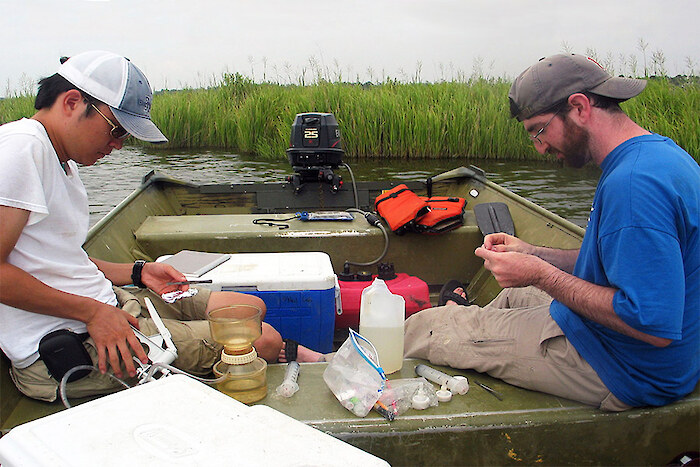
Chlorophyll a is the green pigment in tiny marine algae (phytoplankton) that produces food. Measuring chlorophyll is based on the amount of phytoplankton (microalgae), which uses both nitrogen and phosphorus to grow. Too much algae in the water reduces water clarity, and decomposing algae leads to reduced dissolved oxygen. In a balanced ecosystem, phytoplankton provide food for fish, crabs, oysters, and worms. When too many nutrients are available, phytoplankton may grow out of control and form algal blooms that can harm fish, shellfish, mammals, birds, and even people.
How is it measured?
Chlorophyll a concentrations were measured at approximately 23 stations up to 30 times during the period of interest (January to December). Water samples were taken into a lab where chlorophyll a filtration occurs.
Threshold levels
| Criteria Threshold | Overall Score Calculation |
|---|---|
| < 5.6 µg/L | 90% - 100% |
| 5.6 - 6.2 µg/L | 80% - 90% |
| 6.2 - 7.0 µg/L | 70% - 80% |
| 7.0 - 8.2 µg/L | 60% - 70% |
| > 8.2 µg/L | < 60% |
